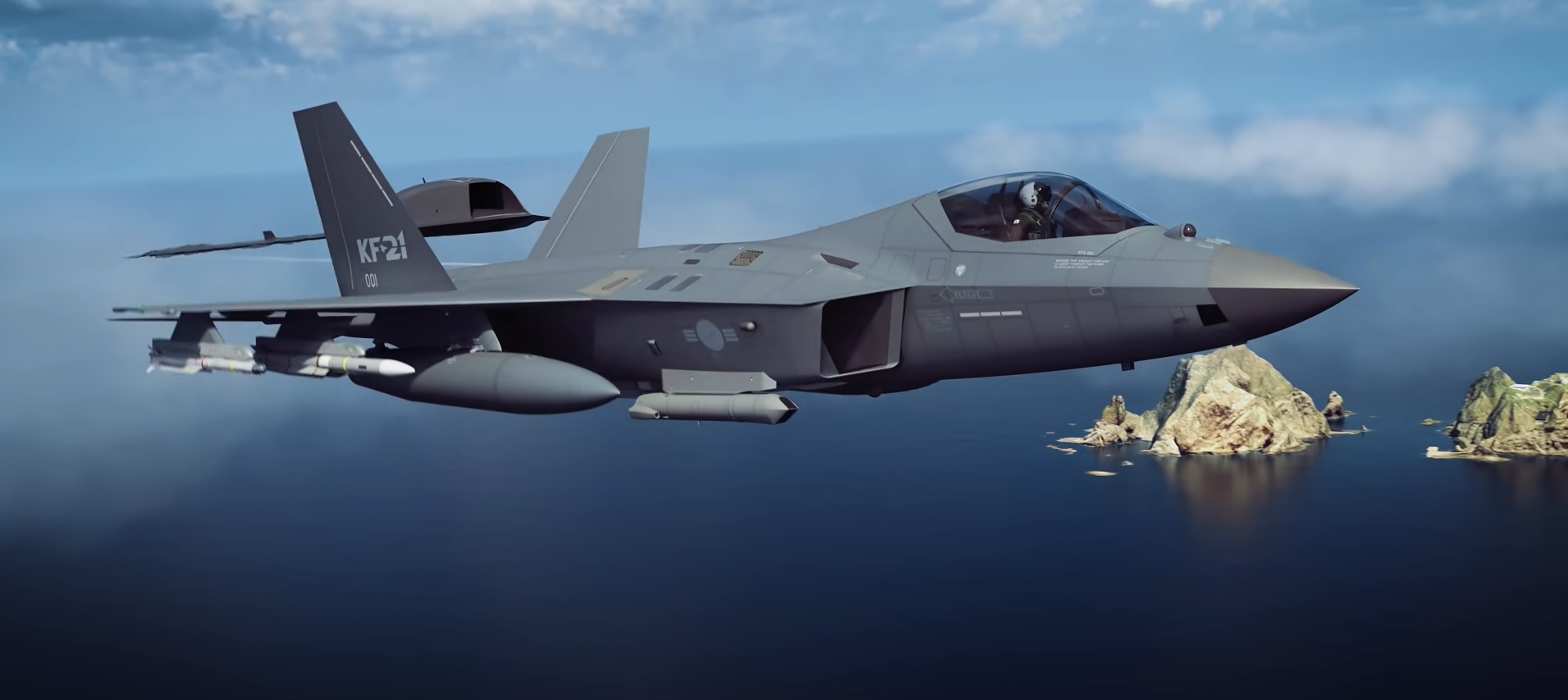South Korea’s indigenous fighter jet, the KF-21 Boramae, has completed its first aerial refueling test, marking a significant advancement in the development of this state-of-the-art aircraft.
Conducted on March 19, this milestone underscores the aircraft’s potential for extended-range operations, as confirmed by the Defense Acquisition Program Administration (DAPA).
The test, which took place over the southern coastal waters, saw the Air Force’s KC-330 tanker aircraft seamlessly refueling the KF-21 prototype. Departing from an airbase in Sacheon, located 296 kilometers southeast of Seoul, the fighter engaged in the refueling operation under the careful watch of defense authorities.
Utilizing its flying boom, the tanker successfully transferred fuel to the KF-21 prototype No. 5. DAPA has revealed that a single refueling session can extend the operational range of the aircraft by at least 50 percent.
This crucial capability enhances the KF-21’s potential for long-range missions, a pivotal aspect in modern aerial warfare.
DAPA said in a release, “Aerial refueling is an essential capability for modern fighter jets. It can expand the KF-21’s operational range and time to maximize the Air Force’s combat capabilities, such as in long-range missions.”
Following this successful test, DAPA has outlined plans to continue assessing the KF-21’s aerial refueling capabilities across various flight parameters, including altitude and speed. This meticulous evaluation process aims to ensure the aircraft’s readiness for a diverse range of operational scenarios.
The KF-21 project, initiated in 2015 in collaboration with Indonesia, represents a significant endeavor to develop a cutting-edge supersonic fighter jet. With six prototypes already constructed, the project is poised to deliver the first production model to the Air Force in the second half of 2026.
The project, however, faces challenges regarding Indonesia’s commitment to the joint development effort. Despite Indonesia’s pledge to contribute approximately 20 percent of the project’s total cost through 2026, delayed payments amounting to 1 trillion won (US$747.6 million) have raised concerns.
Recent reports suggested Indonesia’s request to extend the payment deadline to 2034, sparking discussions regarding cost-sharing arrangements.
Even so, DAPA reaffirmed Indonesia’s obligation to fulfill its payment commitments by 2026. Discussions on cost-sharing are ongoing, though specifics were not disclosed.
Further, recent developments have added complexity to the project. South Korean defense authorities launched an investigation into an alleged attempt by an Indonesian engineer to steal the KF-21’s technologies at Korea Aerospace Industries. The probe has been handed over to the police for further investigation.
Race To Deploy Fifth-Generation Fighter Jet
The successful aerial refueling test represents a significant milestone in the development of the KF-21. With enhanced capabilities for extended-range operations, the KF-21 promises to bolster the Air Force’s combat effectiveness and solidify Korea’s position in the aerospace industry.
Despite challenges, including payment delays and technology security concerns, efforts continue to progress toward the scheduled delivery of the first production model in 2026.
The airframe is stealthier than fourth-generation planes, but it doesn’t match the capabilities of a fifth-generation fighter. Currently, it doesn’t have internal weapons bays, but there are plans for future upgrades that could include them, potentially leading to the aircraft being reclassified as a fifth-generation fighter by the country.
Several experts have lauded South Korea for the swift progress it has made in developing this fighter jet. However, Seoul is not the sole nation endeavoring to develop a stealth aircraft; India and Turkey have also recently escalated their efforts in advancing initiatives for crafting fifth-generation fighter jets.

In early March, India’s Cabinet Committee on Security (CCS) greenlit the project for designing and developing India’s fifth-generation fighter jet, known as the Advanced Medium Combat Aircraft (AMCA), to be managed by the Defence Research and Development Organization (DRDO). The approval includes funding of up to INR 150 trillion (USD 1.8 billion) to be allocated to the program.
The AMCA has been conceived as a twin-engine stealth aircraft weighing 25 tonnes. It sets itself apart with an internal weapons bay and the innovative Diverterless Supersonic Inlet (DSI), marking India’s first development of this technology. With an internal payload capacity of 1,500 kg and the capability to carry an additional 5,500 kg externally, the AMCA promises versatility in combat roles.
Meanwhile, Turkey’s indigenous fifth-generation fighter jet, KAAN, completed its maiden test flight in February 2024, lasting 13 minutes. The successful completion of this inaugural flight marked a significant milestone in Turkey’s pursuit of a fifth-generation fighter, positioning it ahead of India in the development of this type of aircraft.
- Contact the author at ashishmichel(at)gmail.com
- Follow EurAsian Times on Google News




